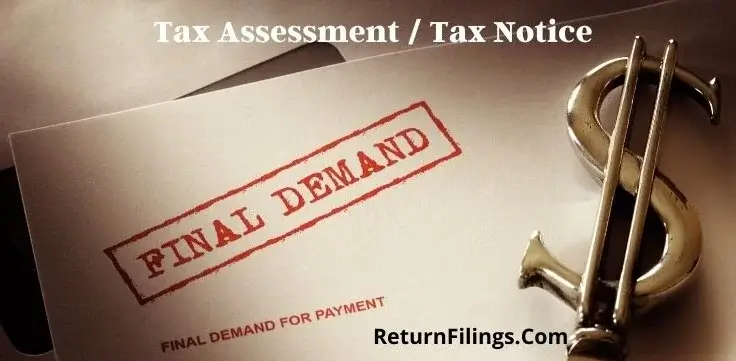Income Tax Notices in India: Types, Response Steps & Real Case Example
1. Introduction
Income Tax in India is governed by the Income Tax Act, 1961, along with the Income Tax Rules, notifications, and circulars issued by the Central Board of Direct Taxes (CBDT). The tax authorities issue Income Tax Notices to taxpayers for various reasons, including scrutiny, reassessment, and compliance.
Understanding these notices, their implications, and how to respond is crucial to ensuring compliance and avoiding penalties. This guide explains different types of notices, their purpose, timelines, and responses required.
2. Types of Income Tax Notices
2.1 Intimation under Section 143(1)
Purpose: This is an initial processing intimation issued by the Centralized Processing Centre (CPC), detailing discrepancies in the tax return.
Key aspects considered:
• Arithmetical errors in the return.
• Incorrect claim of exemptions or deductions.
• Disallowance of incorrect losses or expenditures.
• Inclusion of any income not mentioned in the return.
Response Required:
• If there is no discrepancy, no action is required.
• If a tax demand is raised, it must be paid before the due date.
• If a refund is issued, verify bank details for correct crediting.
2.2 Notice under Section 143(2) – Scrutiny Notice
Purpose: Issued when the tax department selects a case for scrutiny.
Types of Scrutiny:
• Limited Scrutiny: Focuses on specific discrepancies.
• Complete Scrutiny: A detailed review of all financial transactions.
Timeline: Issued within six months from the end of the financial year in which the return was filed.
Response Required:
• Submit documents as requested within the stipulated timeframe.
• Attend hearings if required or respond online via the Income Tax e-filing portal.
2.3 Notice under Section 142(1) – Inquiry Notice
Purpose: Issued when additional information is required after filing the return or when the taxpayer has not filed a return despite being liable.
Failure to Respond:
• A penalty of INR 10,000 can be levied.
• Prosecution for up to one year may apply.
Response Required:
• File the pending tax return if applicable.
• Submit the required documents and respond via the e-filing portal.
2.4 Notice under Section 148 – Reassessment Notice
Purpose: Issued when the Assessing Officer (AO) believes that income has escaped assessment.
Timeline for Issuance:
• Within 4 years if the undisclosed income is below INR 1 lakh.
• Within 6 years if the escaped income exceeds INR 1 lakh.
• Within 10 years if income escaped is INR 50 lakh or more.
Response Required:
• File a revised return or respond with an explanation for the discrepancy.
2.5 Notice under Section 245 – Adjustment of Refunds Against Tax Demand
Purpose: Issued when the tax department intends to adjust a tax refund against an outstanding tax demand.
Response Required:
• The taxpayer must confirm or contest the adjustment within the specified time.
• If disagreeing, file a response with supporting documents.
How to Respond to an Income Tax Notice
• Verify the authenticity on the Income Tax Department’s official website.
• Understand the reason for the notice and the deadline for response.
• Collect relevant documents to support your response.
• Respond within the due date via the Income Tax e-filing portal.
• Seek professional assistance if required.
4. Consequences of Ignoring an Income Tax Notice
Failure to respond can lead to:
• Penalties and interest on unpaid taxes.
• Prosecution for non-compliance in serious cases.
• Tax demand adjustments affecting refunds.
5. Case Study: Real-Life Example of Income Tax Notice Resolution
A taxpayer, Mr. Sharma, received a Section 143(2) Scrutiny Notice for a high-value transaction. By responding with proper documentation and explanations, he successfully reduced additional tax liability and avoided penalties.
Staying informed about tax notices helps taxpayers avoid penalties and manage tax liabilities effectively. For expert guidance, consult a tax professional or use online services specializing in tax compliance.
Reach out to us on email: info@returnfilings.com or on whatsapp: https://wa.me/919910123091 to seek professional advice related to Income Tax Notices and their replies / responses.
frequently asked questions (faq's) related to Income Tax Notices and their reply
Q What is an income tax notice?+
A An income tax notice is a formal communication from the Income Tax Department to a taxpayer regarding various matters related to their income tax assessment. It can seek clarification, request additional information, intimate discrepancies, or demand payment of taxes.
Q Why are income tax notices issued?+
A Income tax notices are issued for various reasons, including: Discrepancies in income tax returns. Non-filing of returns. Underreporting of income. Mismatch in TDS (Tax Deducted at Source) details. Scrutiny of returns. Demand for tax payment.
Q What are the different types of income tax notices?+
A Income tax notices can be broadly classified into:
• Intimation Notices: These are informational notices, such as acknowledgment of returns (e.g., Section 143(1)).
• Scrutiny Notices: These notices are issued for detailed scrutiny of returns (e.g., Section 143(2)).
• Assessment Notices: These relate to the assessment of income and tax liability (e.g., Section 144 - Best Judgement Assessment).
• Demand Notices: These demand payment of taxes, interest, or penalties (e.g., Section 156).
• Notices for Non-Compliance: These are issued for non-compliance with tax laws (e.g., Section 142(1) - requiring filing of returns).
Q What should I do if I receive an income tax notice?+
A If you receive an income tax notice, you should: Read the notice carefully and understand the reason for its issuance. Gather all relevant documents and information. Prepare a detailed response, addressing all the points raised in the notice. Submit the response within the specified time limit. Keep a copy of the response and all supporting documents for your records.
Q What is the time limit for responding to an income tax notice?+
A The time limit for responding is usually mentioned in the notice itself. It's crucial to adhere to the deadline to avoid further action from the Income Tax Department.
Q What happens if I don't respond to an income tax notice?+
A Failure to respond can lead to penalties, further scrutiny, and even ex-parte assessments (assessments without your input).
Q Whom should I consult if I receive an income tax notice?+
A If you are unsure about how to respond to a notice, it's advisable to consult with a chartered accountant or income tax expert.
Q What is a notice under Section 143(1)?+
A A notice under Section 143(1) is an intimation notice acknowledging the filing of your return. It may also point out arithmetical errors or discrepancies in the return.
Q What is a notice under Section 143(2)?+
A A notice under Section 143(2) is a scrutiny notice. It means the Income Tax Department has selected your return for detailed scrutiny.
Q What is a notice under Section 148?+
A A notice under Section 148 is a notice for reassessment of income. It is issued when the assessing officer believes that some income chargeable to tax has escaped assessment.
Q What is a notice under Section 156?+
A A notice under Section 156 is a demand notice. It demands payment of taxes, interest, or penalties.
Q How are income tax notices served?+
A Income tax notices can be served electronically (to the email address registered with the Income Tax Department), by post, or through personal service
Q Can I reply to an income tax notice online?+
A Yes, in most cases, you can reply to income tax notices online through the e-filing portal.
Q How can I avoid receiving income tax notices?+
A To avoid notices, file your returns accurately and on time, maintain proper records of your income and expenses, and be transparent in your dealings with the Income Tax Department.
Q How do I check the status of my income tax notice?+
A You can check the status on the income tax e-filing portal.
Q What is the meaning of "TDS mismatch" in an income tax notice?+
A It means there is a difference between the TDS claimed by you and the TDS reported by the deductor.
Q How do I respond to a notice for non-filing of return?+
A File your return immediately and explain the reason for the delay in your response.
Q What is the difference between a notice and an assessment order?+
A A notice seeks information or clarification, while an assessment order determines your tax liability.
Q Can I appeal an income tax notice?+
A You can appeal an assessment order or a demand notice, but generally not a scrutiny notice.
Q How do I know if an income tax notice is genuine?+
A Check the notice for the DIN (Document Identification Number) and verify it on the income tax e-filing portal.
Q What is the role of a tax consultant in handling income tax notices?+
A A tax consultant can help you understand the notice, gather documents, prepare a response, and represent you before the tax authorities.
Q What should I do if I receive a notice for income that I have already declared?+
A Provide supporting documents to prove that you have already declared the income.
Q How can I update my contact details with the Income Tax Department?+
A You can update your contact details on the income tax e-filing portal.
Q Where can I find the latest circulars and notifications related to income tax notices?+
A The Income Tax Department's website is the official source for circulars and notifications.
- For further reading, explore the following topics:
- 💼 Complete Guide to Tax Preparation Services in India: Return Types, Filing Process & Professional Support
- 📘 2025's Ultimate Guide: Deducting TDS on Property Transactions in India
- 📊 Indian Crypto Tax Rules: A 2025 Compliance Overview
- 🔄 India's New Tax Code (DTC) vs. Old System

